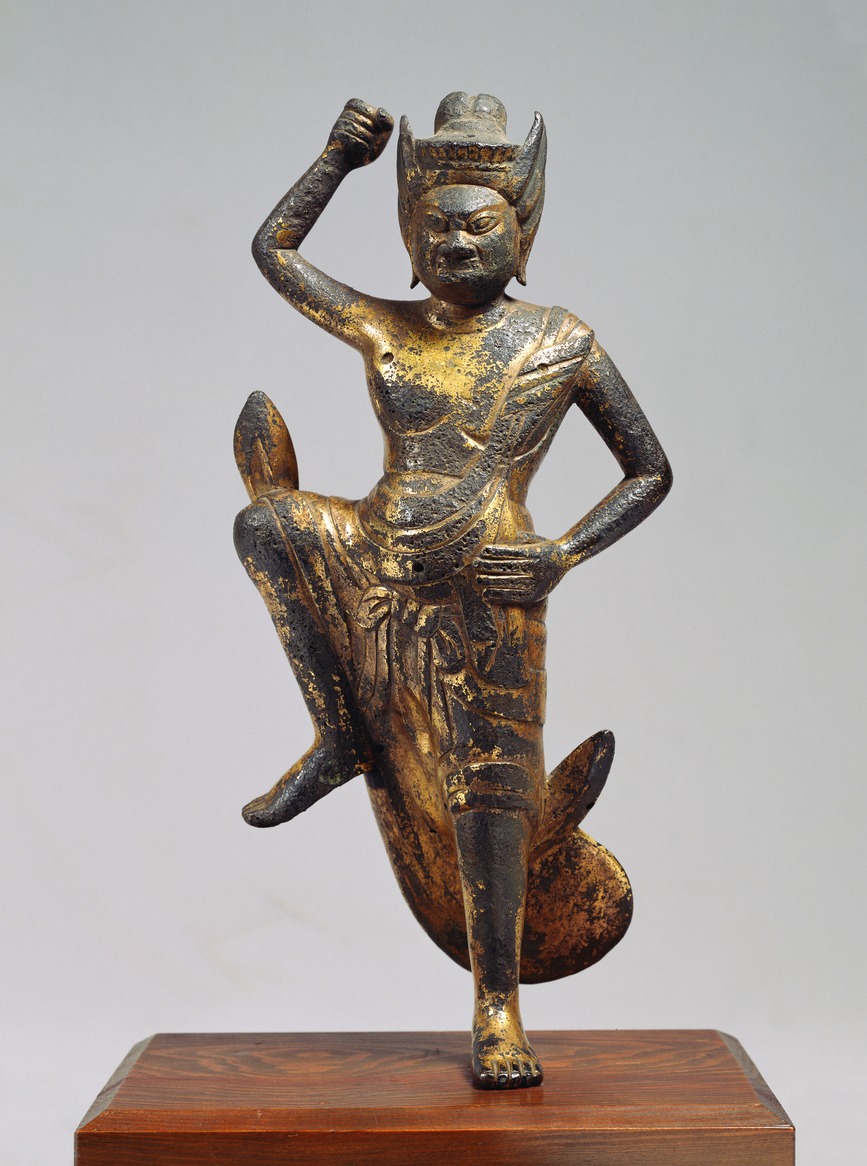/tokyonationalmuseum-da510dbea7d648c190c66390eb9a651f.jpg) |
Tokyo National Museum
Yushima Seido, Tokyo, Japan, 1872
|
When it comes to museums, they transport visitors to different parts of the world, specifically in the Asia region. Most of these museums would present artifacts and works of art from the past and the future that would contribute to the audience of all ages. One of these museums having these artifacts is located in Tokyo National Museum, which has over 500 artifacts from different parts of Asia such as China, Korea, South Asia, etc. Choosing one of the works is a challenge to discuss since there are many of them in this museum, but from the rest, I would have to choose the Zao Right Statue, which is gold and bronze and was made by an unknown sculpture in the Heian period (12th century). The reason I chose this artifact is that it really stood out to me among the rest of the statues, and the facial feature sort of made me interested in the work presented.
For the JSTOR article, I found a journal entry that is similar to the statue, called "The Origins and Development of the Pensive Bodhisattva Images of Asia" by Junghee Lee. In the journal, it discussed the imagery of how the figures would display, such as yoga positions and the different countries would adapt that would connect to one another in some way. For instance, it mentions, "The one-legged-crossed pose in itself appears to have become of great importance in China from the Eastern Wei period. Such images were not identified in inscriptions as specific Bodhisattva but, rather, developed from the generic flanking bodhisattva of the triads of the Northern Wei period." (Lee, 353). How it's this similar to the statue I chose is based on the pose the stature is since it has a meaning behind them and the origins of where it first came from. Another thing to mention in the passage is how, "It would perhaps be most prudent to avoid such attempted identifications by specific foliage, and define longshu simply as 'dragon-tree,' the tree-trunks twined about by dragons which with their masses of simulated foliage sometimes came to be used in the Northern Qi period as frames in place of the old architectonic niches." (Lee, 344). Since it relates to what the statue is doing with having one leg up and one of his arms sticking out like a tree. Overall, that's what I found from researching the similarities to the article to the statue itself in some ways according to both sources.
 |
Zao Right Statue
Heian Period
|
Lastly, how it relates to the class theme of the statue is how it is one of the many works presented in the museum. With the use of gold and bronze plastered on it and present it as Zao Gongen. Since it is described, "The well-balanced head, rich chest flesh, and slender limbs show the characteristics of the late Heian period (12th century)." Which is similar to the beginning where it mentions, "A second seated bodhisattva posture is the one-legged-crossed pose, a central component of the 'pensive pose' that is the topic of this article, in which one leg is pendant while the other leg is raised so that the ankle rests on the opposite knee." (Lee, 311). The reason for that is because is how it's described that's sort of sounds like the one mentioned in the museum, even though it was mentioned in the journal entry, and how poses would translate in the Asian region according to the entry as well. Overall, these works of art are one of the many examples of what the Tokyo National Museum presented, even though there's more out there would have a different meaning or similarities between the research results to the works of art not just in this museum, but other museums in the world.
Work Cited
Lee, Junghee. “The Origins and Development of the Pensive Bodhisattva Images of Asia.” Artibus Asiae, vol. 53, no. 3/4, 1993, pp. 311–57, https://doi.org/10.2307/3250524. Accessed 12 May 2022.
“国立文化財機構所蔵 国宝・重要文化財.” E国宝 - 蔵王権現立像, https://emuseum.nich.go.jp/detail?content_base_id=100079&content_part_id=001&content_pict_id=001&langId=ja&webView=.
/tokyonationalmuseum-da510dbea7d648c190c66390eb9a651f.jpg)


Comments
Post a Comment